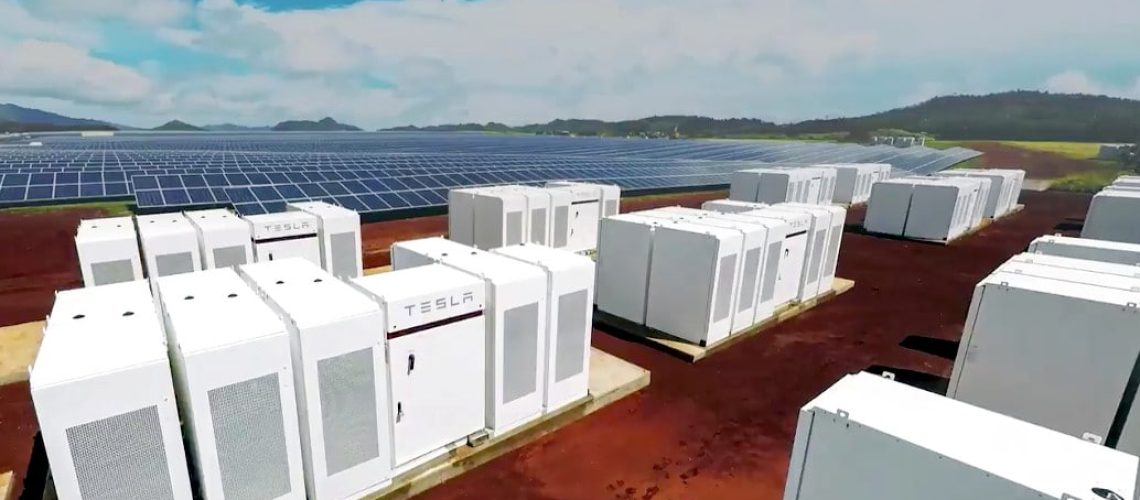A recent report from the Clean Energy States Alliance highlights best practices, identifies barriers, and underscores the need to expand state energy storage policymaking to support decarbonization in the United States.
Decarbonization is the move away from fossil fuel resources and toward renewable energy. But with the intermittency of renewables like wind and solar, energy storage systems are required to ensure reliability. As states increasingly declare decarbonization goals, they will need to create new policies, rules and regulations that will enable the deployment of an unprecedented amount of energy storage, according to the Clean Energy States Alliance (CESA), which just released its States Energy Storage Policy: Best Practices for Decarbonization report.
CESA published the report jointly with Sandia National Laboratories, and it highlights best practices, identifies barriers, and underscores the urgent need to expand state energy storage policymaking to support decarbonization in the U.S. The report is based on findings in a 2022 survey of the states leading in decarbonization goals and programs, and it looks at key state energy storage policy priorities and a series of case studies show the challenges encountered by some of the leading states.
The state survey distribution resulted in 22 responses from 14 states plus the District of Columbia. The following states were represented in the survey responses:
An industry survey was also completed by representatives of six energy storage development companies, plus one industry consultant who formerly worked for an energy storage development company: Enel North America, Key Capture Energy, New Leaf Energy (formerly Borrego), Nostromo Energy, Sunrun, and Tesla.
At the time the study was conducted, 22 states (plus the District of Columbia) adopted decarbonization goals, however, not all have set policy for energy storage deployment. California and New York are cited as examples of states with “very advanced and sophisticated policy measures”. Many others are beginning to assess energy storage policy needs.
What motivates a state to develop energy storage policy? The Best Practices report says it varies. Regulated utilities may request regulatory action because they are seeking to recover the costs of their investments in energy storage. Third-party developers may have found gaps in interconnection rules or valuation standards that the regulatory commission needs to address. And also the process of energy planning at the executive or legislative level may require policy decisions in order to meet the state’s clean energy goals.
The report outlines the four steps to policy development from Level 1, which is demonstrated interest in storage up to the fourth “maturity level” of including storage in strategic plans, and ranks the states by level of maturity. California, Connecticut, Maine, New Jersey and New York had all achieved Level 4.
Those states that are just beginning the process have cited a few reasons for their delays in developing storage policy and programs. These include lack of clarity as to which cases are best suited for storage, a belief that storage may become more important later in their process, ongoing best practices assessments, and cost.
Another observation of the study shows that even states with advanced decarbonization goals still struggle with whether and how to deploy storage, especially with the challenge of bringing it to scale within the state’s decarbonization timeframe.
The report found commonalities as to what the states will include in their future energy infrastructures:
- A mix of central and local generators, energy storage, and other distributed energy resources
- A significant expansion of batteries and other energy storage technologies to be used for both emergency backup generation and as peak shaving resources, along with an enhancement of the ability to build infrastructure that can accommodate this significant expansion of energy storage resources
- The use of microgrids or other distributed energy resources (DERs) and their associated management systems to integrate and optimize an increasing amount of on-site intermittent renewable generation and energy storage
The authors caution that this report “highlights early stage results in a highly changeable field.” The study found, for example, that different states face different challenges. Some operate in very different energy markets and regulatory environments, for example. The consensus among respondents is that energy storage is key to hitting decarbonization goals. With fewer than half the leading decarbonization states having set an energy storage procurement goal, there is much more work to be done. But as more states develop energy storage programs to support their decarbonization goals, best practices are emerging that other states can emulate.
A March 23 webinar will summarize findings from the survey. Developed on behalf of the Energy Storage Technology Advancement Partnership (ESTAP), which is funded by the U.S. Department of Energy’s Office of Electricity, managed by Sandia National Laboratories, and administered by the Clean Energy States Alliance.



